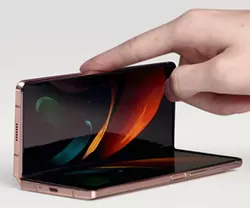Samsung Galaxy Z Fold 2: A Smartphone For Z Generation. How It Differs From Its Forerunner

With the announcement of the Galaxy Z Fold 2, Samsung began to form a smartphone series equipped with foldable displays. This is the third model of the manufacturer with such a display ( Galaxy Fold was the first, of course) and the second (after Z Flip), which got the Z symbol in its name. Letter Z symbolizes a new class of flexible smartphones. According to a publication on the Samsung Display blog, in the very near future we can expect smartphone models with a screen that folds twice, like a leaflet, which will literally resemble the letter Z. However, we also see a reference to Z generation, or zoomers. A generation of kids born between 2000 and 2010, who have been on the Internet and cell phones forever.
Samsung has conducted a survey this summer in the U.S. and South Korea. It included 1,000 people at the age from 18 to 64 years old, who use smartphones and plan to buy a smartphone with a foldable display within the next 12 months). 98% of respondents said that the smartphone is their primary device. 76% of those surveyed prefer to have one personal device instead of several. 78% of respondents who are Millennials and Zoomers (i.e., approximately 18 to 30 years old) said they use a smartphone for multi-tasking. 74% already talk about using a smartphone for work even at home (especially now, during times of self-isolation).
Scenarios of smartphone use in the era of multitasking are hardly surprising to us; they are distributed in the survey participants as follows:
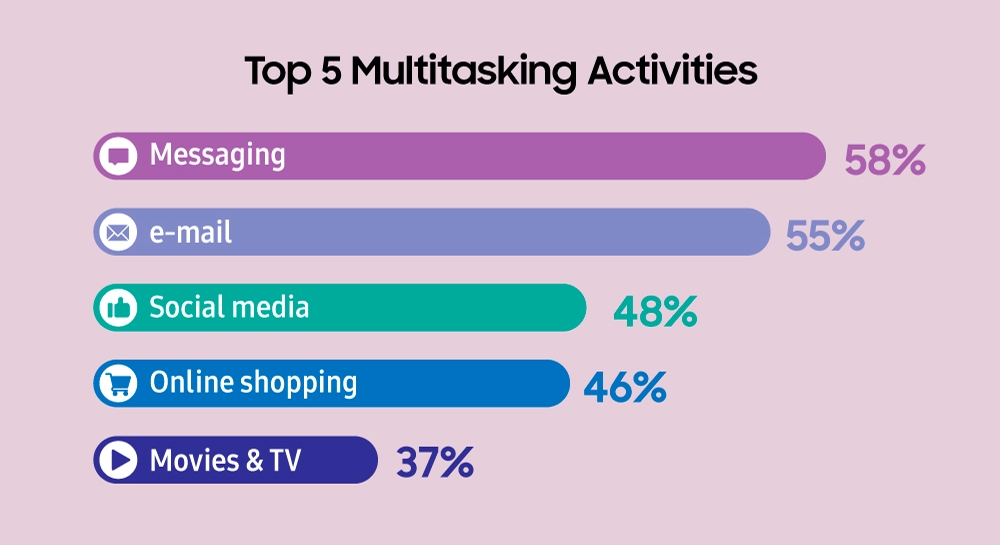
Here we should make a remark about multitasking. It is not a question of multi-window mode on a smartphone. All these applications are used at the same time, there is a difference in consumer behavior: the older generation is used to the fact that the phone performs one function and is designed for calls. Well, two, if you add SMS to them. But over the past decade, the world has changed dramatically, and with them so have the habits of users. And young people seem to be among the first to adopt new technologies and services. The same with social networks, which ten years ago did not really exist (certainly not on smartphones). But today the smartphone is the main device for social media simply because it is more convenient than a computer. Thus, Z in Samsung's smartphones range with foldable display says that such smartphones will become common when Zoomers generation is no longer young people. When they all come out of college age and start working, a smartphone with a foldable screen will be just as usual for them. So that's an updated answer to the question, "Who needs smartphones with foldable displays?" that we asked almost two years ago.
It is interesting how respondents themselves answer this question:
- 64% expect more mobility. As you need to turn your computer on or take it out of standby mode. Even if it's a laptop, you need to take it out of the bag, and a smartphone is always ready to use.
- 46% want a bigger screen because they can see more on it. We remember the tablet boom, and then the race to increase the diagonal of smartphones, which has already reached almost 7 inches. Although Steve Jobs claimed that 3.5 inches is enough, it's clear he was wrong.
- 38% want to multitask on the big screen. Here, some of them might even be referring to multi-window mode, which is more convenient on a bigger screen, which we know from the difference between working on a smartphone and a tablet.
What is new about Galaxy Z Fold 2
Despite the fact that less than a year passed between the release of the first and second generation Galaxy Fold, both its appearance and features have been seriously improved. While the entire smartphone industry is stagnant mostly, and nothing conceptually new has happened for a long time, here we see a different thing. It’s the same we saw at the dawn of the first phones and then smartphones: they were very substantially different and had improved technologically literally over the course of a year!
Interestingly, the thickness of the new smartphone (in the image it is on the right), even if slightly, but decreased (by an invisible 0.3 millimeters at the hinge and by almost 2 millimeters at the edges). The height is almost two millimeters more and the width is reduced by 5 millimeters. Thanks to this, it was possible to place both displays with a larger diagonal than its forerunner. At the same time they have changed the ratio and made the screen more elongated and comfortable to work with.
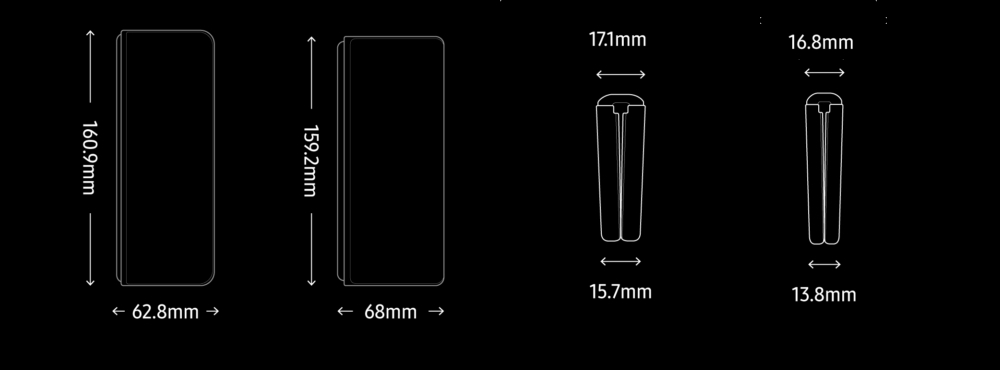
The most important change is in the external screen growth from a 4.6-inch to a full-size 6.2-inch display. The main display is larger, too, and has gotten rid of the cutout in the fight for a front camera design. There were 3 options: "t-shirt", "drop" and "hole". And the latter has won. To see how big the 7.6-inch screen is, it is enough to remember that the first Nexus tablet was 7 inches, so it is already completely tablet territory, although, yet, at its lower limits. And the outer screen got the latest Gorilla Victus protective glass, like the Galaxy Note 20.
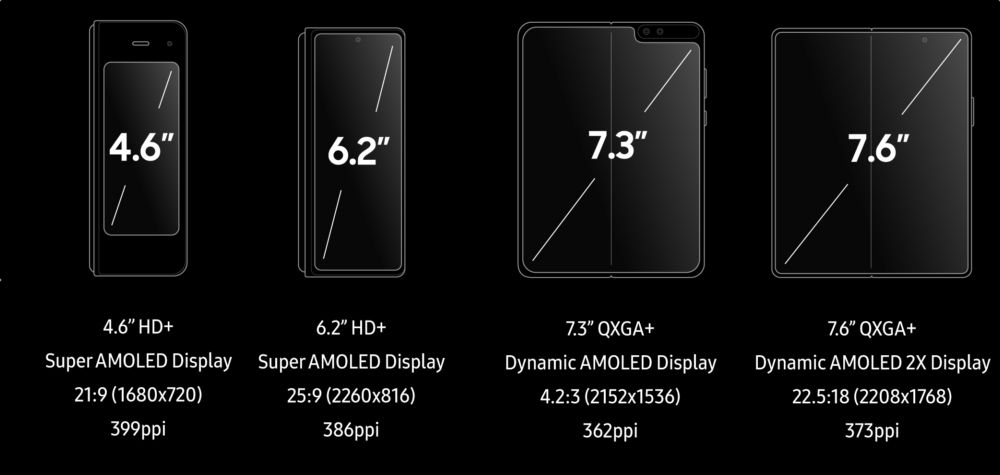
The changes also affected the five-camera system (the first Galaxy Fold had six). The front camera got rid of the depth module used for the selfie bokeh effect. Considering the features inherited by the Z Fold 2 from the Z Flip (using the external screen as a viewfinder), the second front camera is rapidly (only a year has passed) moving into the category of rudiments. The main camera module with three lenses became slightly more protruding above the body (like the Galaxy S20 Ultra and Galaxy Note 20 Ultra) and got an LED flash, the usefulness of which has moved from the category of photography (flagship smartphones do not need a flash anymore) into the category of another (in a long list) device destroyed by modern phones - a flashlight.
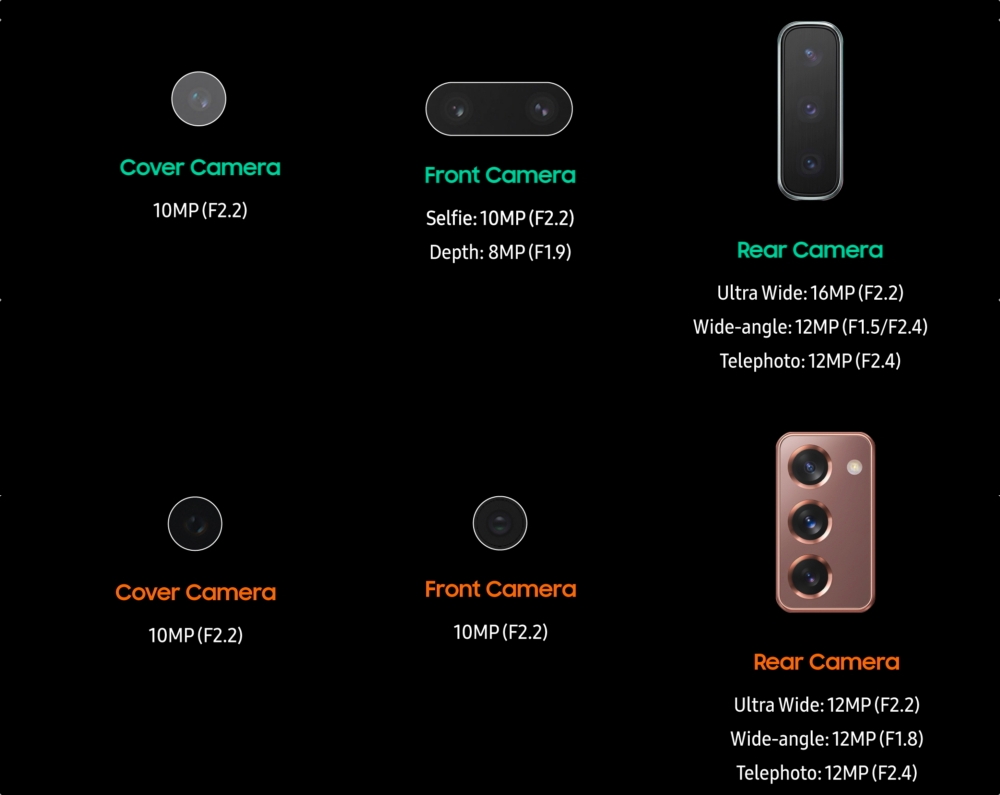
Galaxy Z Fold 2 vs Galaxy Fold: what's new under the hood
The Galaxy Z Fold 2 uses Qualcomm's flagship Snapdragon 865+ processor, while its forerunner Galaxy Fold has a previous-gen Snapdragon 855. The battery capacity has been bumped to a 4500 mAh. The 25-watt fast charging is supported now. There is also an adaptive screen refresh rate up to 120 Hz which Samsung flagship phones got this year.
An important difference of the new Galaxy Z Fold 2 was its further development of the interface, adapted to the possibilities of the folding screen, with the first features of which we met in the Z Flip. The mode was called Flex Mode, but it is worth a more detailed story for another time.
| Samsung Galaxy Fold | Samsung Galaxy Z Fold 2 | |
| Cover Display | 4.6-inch, 1680 x 720 (21:9) Super AMOLED |
6.23-inch, 2260 x 816 (25:9) Super AMOLED |
| Main Display | 7.3-inch, 2152 x 1536 (4.2:3) Dynamic AMOLED, 60 Hz |
7.6-inch, 2208 x 1768 (5:4) Dynamic AMOLED 2X, 120 Hz |
| Processor | Qualcomm Snapdragon 855 | Qualcomm Snapdragon 865+ |
| RAM | 12GB | 12GB |
| Storage | 512GB UFS 3.0 | 256GB, 512GB UFS 3.1 |
| Rear Cameras | 12 MP, f/1.5-2.4 OIS (wide) 12 MP, f/2.4 OIS (2x zoom) 12 MP, f/2.2 (ultrawide) |
12 MP, f/1.8 OIS (wide) 12 MP, f/2.4 OIS (2x zoom) 16 MP, f/2.2 (ultrawide) |
| Selfie Cameras | 10 MP, f/2.2 + 8 MP, f/1.9 10 MP, f/2.2 (cover) |
10 MP, f/2.2 10 MP, f/2.2 (cover) |
| Battery | 4380 mAh | 4500 mAh |
| Charging | 15W charging via cable 15W wireless charging 4.5W reverse wireless charging |
25W charging via cable 11W wireless charging 4.5W reverse wireless charging |
| USB | USB Type-C 3.1 | USB Type-C 3.2 |
| Fingerprint sensor | side-mounted | side-mounted |
| Dimensions | Folded: 160.9 x 62.8 x 17.1 mm Unfolded: 160.9 x 117.9 x 6.9 mm |
Folded: 159.2 x 68.0 x 16.8 mm Unfolded: 159.2 x 128.2 x 6.9 mm |
| Weight | 276 g | 282 g |
5 key differences between Galaxy Z Fold 2 and Galaxy Z Fold:
- The external display diagonal has increased dramatically from 4.6 to 6.2 inches
- The main display became slightly larger, without the cutout
- The main camera can be used for selfies, and it also has a flashlight
- More efficient Snapdragon 865+ CPU
- Higher battery capacity: 4500 mAh
